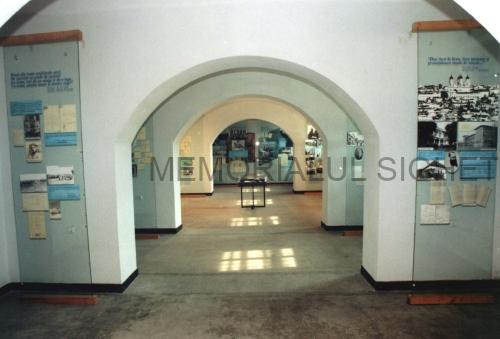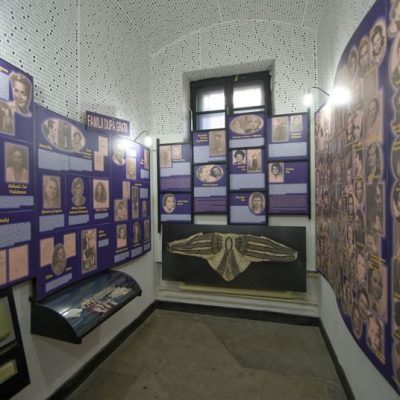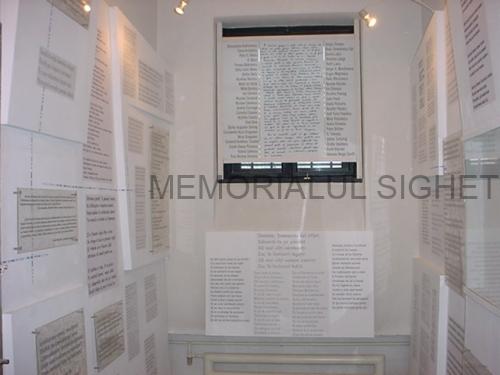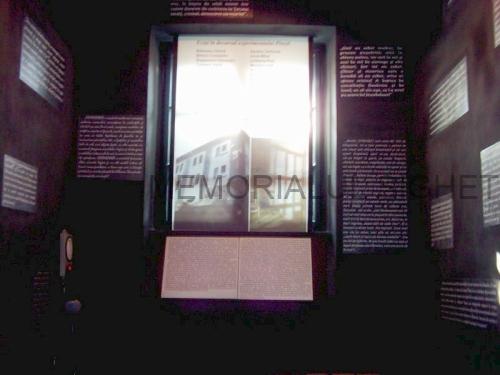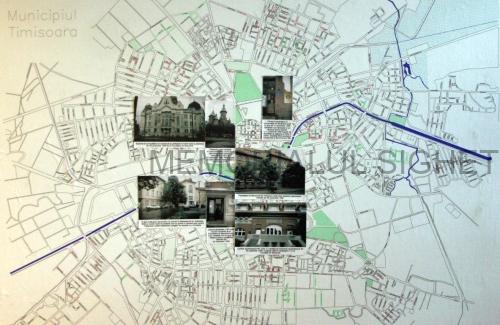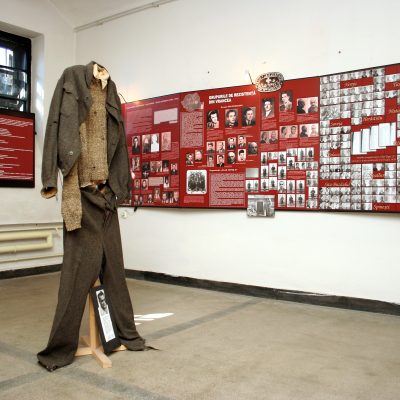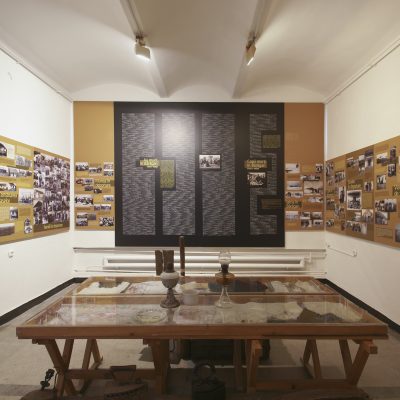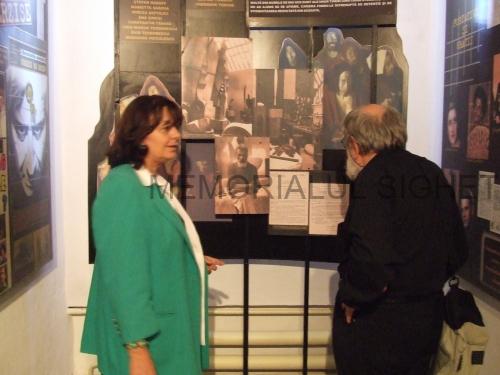
The arts suffered the same restrictions and repression as literature, and artists were kept under surveillance, arrested and imprisoned whenever they went against the regime, either in their private lives or in their work.
Constantin Tănase and Mărioara Voiculescu in the theatre, Dimitrie Cuclin and Erich Bergel in music, and Corneliu Baba and Nicolae David in the fine arts: these are just a few of the major artists who filled the communist prisons, above all during the sombre period between 1945 and 1964.
In the list of those arrested, you will also find unknown names. These are the names of young people arrested while still at university and who, because they died or were prevented from continuing their studies, were unable to have a career and were condemned to obscurity.
A panel in this room shows the classic monuments destroyed by the communists, as well as the traditional songs that were outlawed, to perform which could lead to a prison sentence.
Cinema, being an art form subsidised by the state, was most vulnerable to the effects of censorship. Numerous films were banned, after various censorship committees had cut them to ribbons. The Reconstruction, a masterpiece by director Lucian Pintilie, was shown for just four weeks at a single cinema, before being banned in Romania and prevented from being shown at major international film festivals. Nicolae Ceauşescu personally banned a film called The Sand Cliffs during a notorious conference at Mangalia in August 1983.
Another notorious case was the banning of Lucian Pintilie’s production of Gogol’s The General Inspector in September 1972, after which the director was unable to work in Romania for very many years and went into self-imposed exile in the West.


